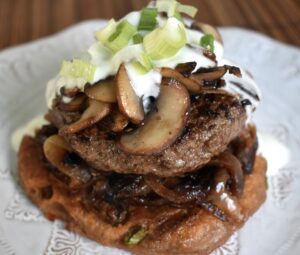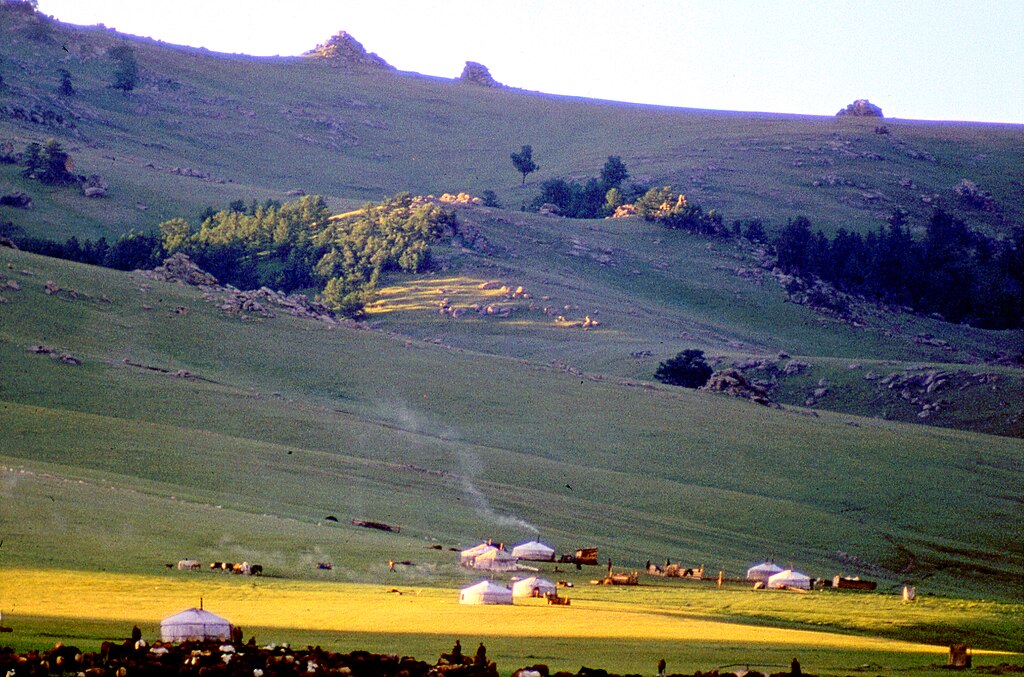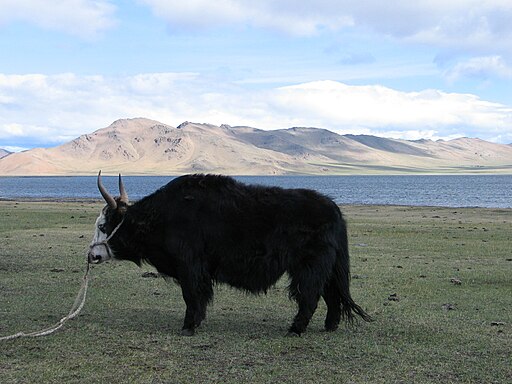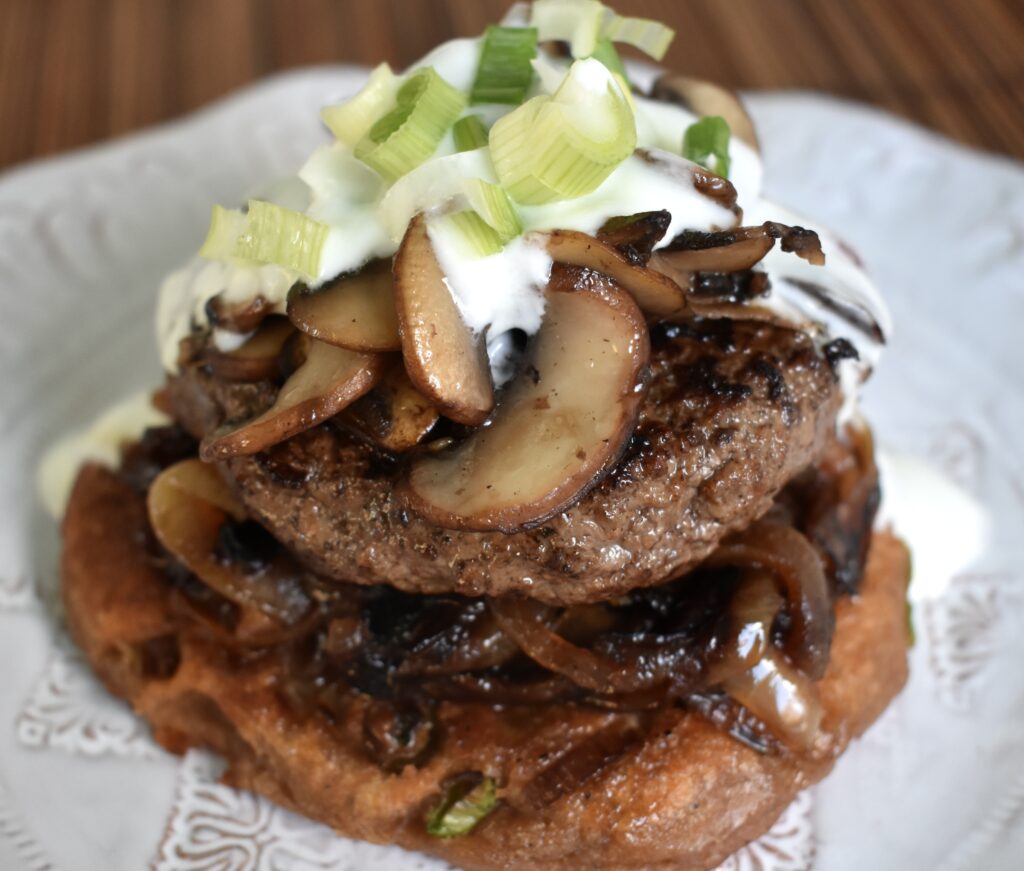
Bison Burger with Onions and Mushrooms on Fried Flatbread
For most of us, Mongolia brings to mind nomadic tribes and of course, the great TEMÜÜJIN – (Genghis Khan). Mongolia’s know history goes back to the 4th century BC, even the name Mongol dates back to at least the 11th century BC. Genghis Khan became the ruler of all Mongols in the early 1200s. His rule began the age of conquest for Mongols – at the height of the empire, Genghis’s relatives reigned over Eastern Europe, the Middle East and China. The empire fell apart in the 14th century and in the 17th century, Mongolia fell under the rule of the Manchus of the Chinese Qing Dynasty.
After the collapse of the Manchu dynasty, Mongolia allied with the Soviet Union and declared independence in 1911. They were a Soviet satellite state until the collapse of the Soviet Union in 1989. By 1991 Mongolia had transitioned to an independent democracy with a free market economy. Today Mongolia still has close cultural and political ties with Russia and strong economic ties to China.
Historically, Mongols have been nomadic people and even today 25-30% of the population live outside the cities in a relatively nomadic fashion. Mongolia is the one of the least densely populated countries in the world with only 2 people per sq/km, so the nomadic groups have lots of land to herd animals. This animal herding tradition is so important to the food culture of Mongolia. The traditional Mongolian diet very meat and dairy focused. With tribes on the move, the primary cooking techniques are grilling, boiling and steaming.
I’ve got to admit, as I started reading about the food traditions, I became alarmed. First, Mongolian food is centered around the “5 snouts” – horse, yaks, camels, goats, and sheep. Yes, I said horses. Aaruul is a favorite snack – its cheese curds dried out until they are hard as a rock. There’s, of course, lots of dried meat. Then there’s the traditional dish that is cooked inside the carcass of a goat, or maybe it was a sheep, I can’t remember.
It’s been a while since I mentioned my upbringing, but I grew up in the midwest – growing up we ate very basic food, meat and potatoes. My father didn’t like “weird” food or spicy food. His favorite dish is a plain hamburger with sweet relish and ketchup, no cheese. He was the inspiration for this journey. Obviously, I’ve moved on from my roots quite a bit, but I’m not really at the horse meat stage yet – pretty sure I won’t ever be. Also, horse, yak, and camel are not readily available in the Boston area.
And even when you get past the meat question, there’s the “what else” question. The climate is largely desert and, according to the CIA Worldfactbook, 0% of the land is permanent crops (while 72% is permanent pasture land). So vegetables are extremely scarce in traditional cooking, as are herbs and spices. Cheese and milk based products are common, but horse, camel, and yak are the primary dairy sources and those flavors are a bit different than the cow centric dairy we typically consume in the US. Flatbreads and dumplings are the main carb source in traditional cooking because they can be made and cooked in camp like settings.
So yes, modern Mongolian cuisine has more variety. The Soviets brought baked, leavened bread to the country and today, bakeries are common in the urban areas. And vegetables and spices are available today, but they are still not part of authentic Mongolian culinary traditions – and they aren’t specific to Mongolia. Since I’m trying to bring the flavors that are traditional to life in burger form, I was a bit stuck, and nervous, and pretty sure whatever I did was not going to be particularly yummy. But, when in doubt, stick to your guns and see what happens.
First I checked with Google, “what does yak taste like?” – no way I was going near horse, I’ve heard camel is vile, goat is very tough and usually braised so didn’t seem a good choice for burger, and sheep seemed like a cop out. Luckily, according to Google, yak tastes most like bison or venison (but venison is a little gamier). I’ve never had a bison burger, but now seemed like a good time to try something new. Luckily our local Whole Foods carries ground bison, so meat choice, done.
I decided not to go down the cheese route and instead go with yogurt – Whole Foods to the rescue again! They had a sheep’s milk yogurt! Sheep’s milk yogurt is less viscous than traditional American yogurt, but similarly flavored with just a hint of goat cheese-like flavor. If you can’t find it, you can use regular yogurt (not Greek yogurt which is much sharper).
Onions grow wild in Mongolia and are used frequently in Mongolian cooking, so yay, we have onions. Mushrooms can also be found in the forests, so some yummy mushrooms add a nice touch. And for the bread, I made a homemade flatbread a lot like naan – store bought naan would definitely work.
But now the real challenge. Traditional Mongolian cooking doesn’t use olive or even vegetable oil (makes sense), instead food is cooked in animal fat. Sheep fat is the most mentioned that I saw. I don’t have a handy supply of sheep fat, or yak fat, or any animal fat (ok, I have a little bit of bacon fat in the freezer, but not enough to cook burgers, bread, onions and mushrooms. Fortunately Whole Foods had a solution. Frozen duck fat. Duck isn’t really traditional, but at this point, I had to make some compromise.
Cooking bread, meat, onions and mushrooms in animal fat and toping it with yogurt, filled me with dread. Fat upon fat, heavy upon heavy, no spices, no herbs, it just sounded like a lot. But when in doubt, stick to your guns. So, I mixed the bread, fried it in duck fat. Sliced the onions, fried them in duck fat. Sliced the mushrooms, fried them in duck fat. Made some bison patties and fried them in duck fat. My house stank of duck fat (I know, it could be worse).
My husband and I were dubious, but we dove in. And lo and behold, this burger was absolutely delicious! Yes, it was very meaty, and fatty, but in such a yummy way. Bison tastes a lot like beef but has more meaty flavor – it’s like beef concentrate. The bread just absorbed the duck flavor and the onions and mushrooms gave a sweet umami accent to the dish. The yogurt provided a sweet and slightly tart note that finished the dish perfectly. Maybe it was our low expectations, but this burger really sings, and somehow didn’t feel overly heavy. It is a celebration of meat to be sure, but one we enjoyed thoroughly. We served it with a big American Zinfandel – it is not a dish for a subtle wine.
If you like this burger, you will almost definitely like the Monegasque Burger. They are both richly flavored and meaty burgers.
©Copyright 2023 Linda Monach

Mongolian Burger
Ingredients
Mongolian Flatbread
- 1 1/2 Cup Whole Wheat Flour
- 1 Cup Boiling Water
- 4 Tbsp Chopped Scallions white and light green parts
- 2 Tbsp Duck Fat
Fried Onions & Mushrooms
- 2 Tbsp Duck Fat
- 1 Large Onion Sliced Thinly
- 8 Ounces Cremini Mushrooms Sliced Thinly
Mongolian Burger
- 1 Pound Ground Bison venison or beef could be used as substitute
- Kosher Salt
- Mongolian Flatbread recipe above
- Fried Onions & Mushrooms recipe above
- 4 Tbsp Sheep Yogurt (Plain) plain yogurt (not Greek) could be used as substitute
- 4 teas Chopped Scallions optional garnish
Instructions
Mongolian Flatbread
- Put the flour in a large bowl and add half the water. Mix well. Continue to add water until a dough sticks together. Let the dough sit for 20 minutes. Divide the dough into two balls. Divide the two balls in two again (so you have four total) then add scallions to each ball. Flatten the balls into disks.
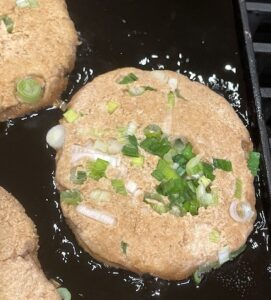
- Heat the duck fat in a cast iron skillet until shimmering. Add the disks to the hot oil and fry until golden, then turn and brown the other side. When bread is done, place the bread on wire rack until you're ready to use.
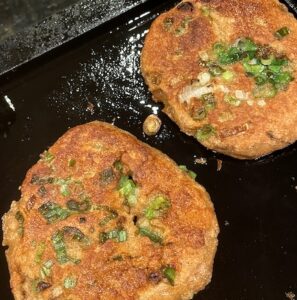
Fried Onions & Mushrooms
- Heat 1 Tablespoon of the duck fat over medium high heat until shimmering. Add the onions and brown until soft (turn down the heat if they start browning too fast). Remove the onions and add the last Tablespoon of duck fat. Turn the heat up again to medium high. Add the sliced mushrooms and toss until fat is absorbed. Let the mushrooms cook tossing occasionally until the liquid is released again and then cook until liquid evaporates and mushrooms brown. Remove from heat and keep in separate bowl from onions for serving.
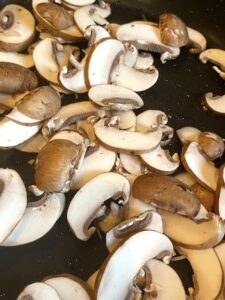
Mongolian Burger
- Form four patties from the ground bison and salt generously on each side.
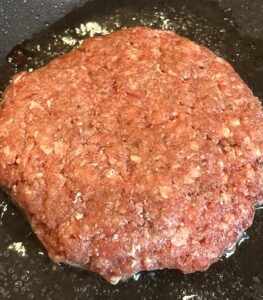
- Heat duck fat over medium heat in a cast iron skillet and add the patties. Brown each side and cook to desired temperature. Bison is a little redder than beef, we enjoyed it at same temperature as beef burgers (medium well for us).
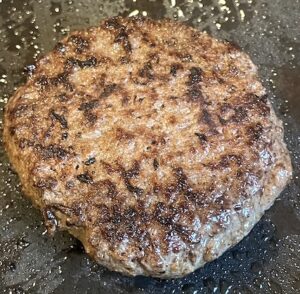
- Put a generous scoop of fried onions on each flatbread disk. Add the burger patties, then a scoop of fried mushrooms. Spoon yogurt over the mushrooms and sprinkle chopped scallions over the top (if desired).
